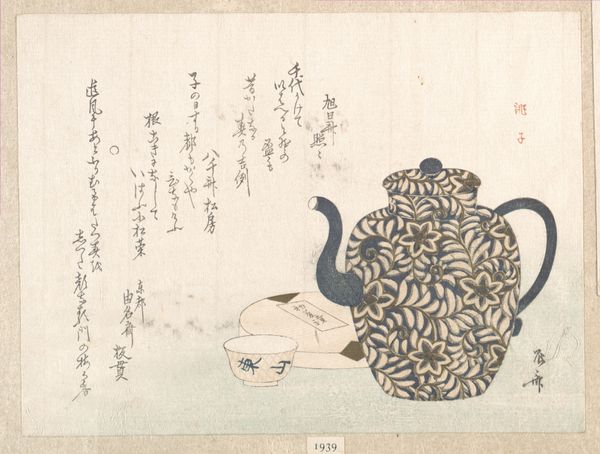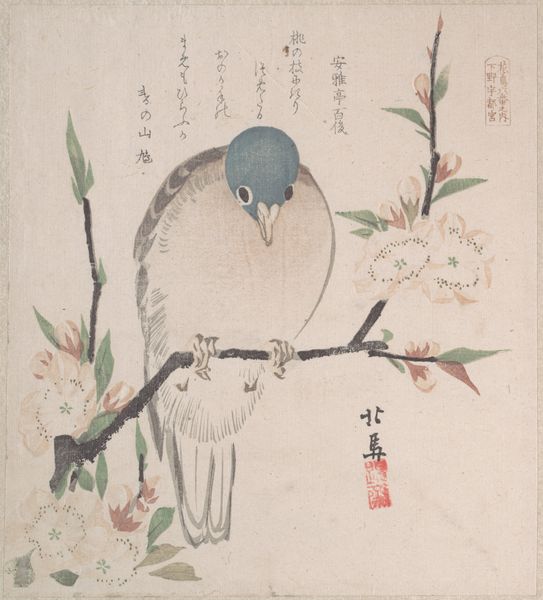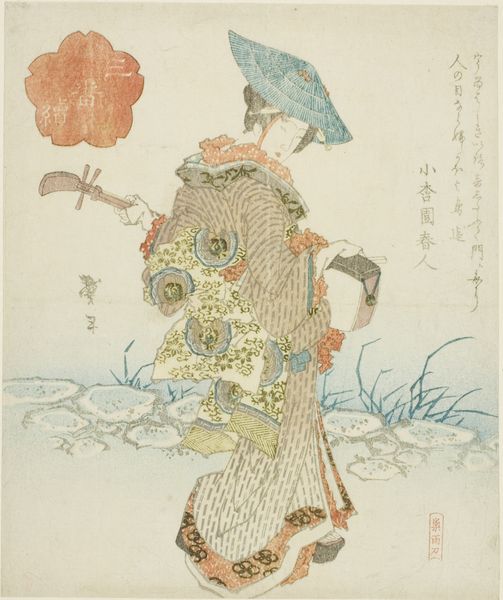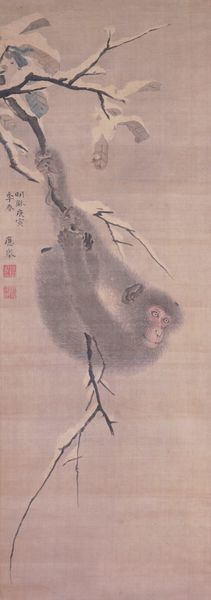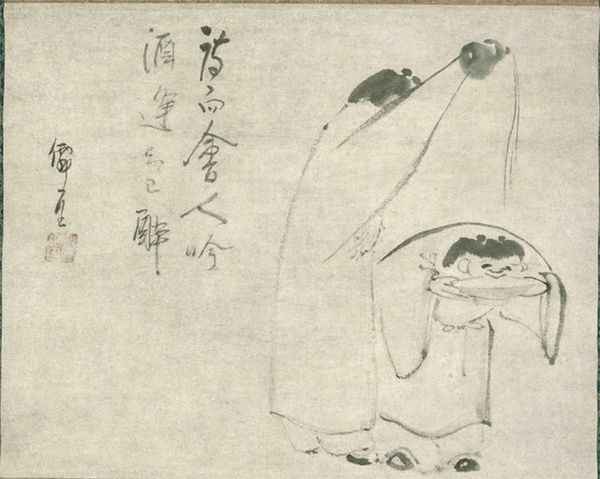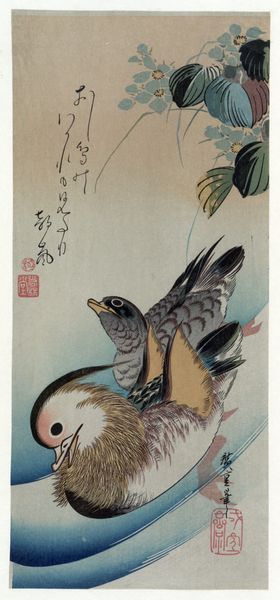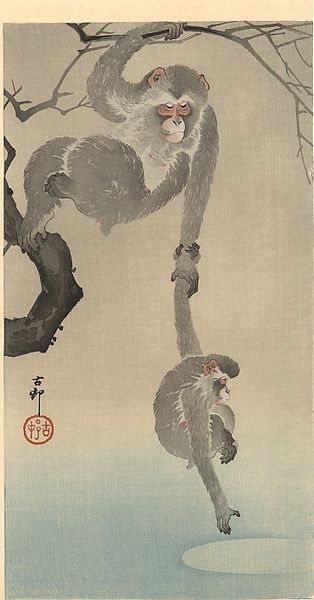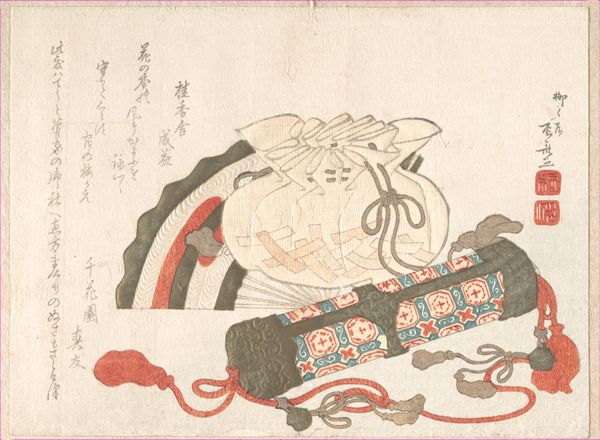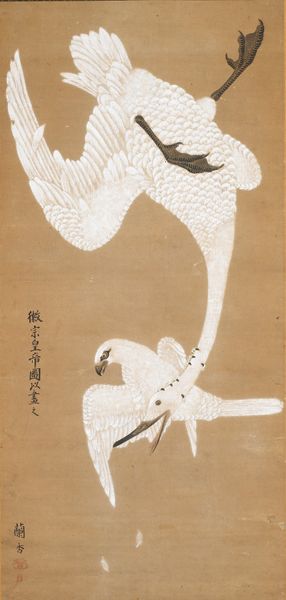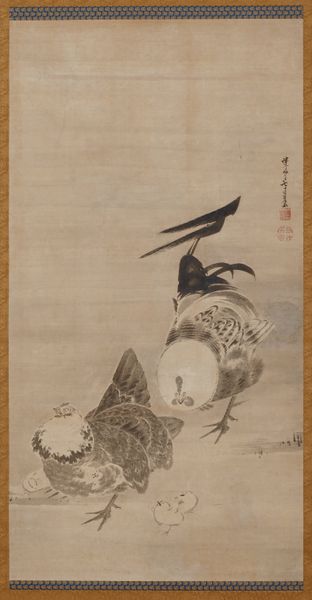![Chinese Immortals [one of a pair] by Hara Zaichū 原在中](/_next/image?url=https%3A%2F%2Fd2w8kbdekdi1gv.cloudfront.net%2FeyJidWNrZXQiOiAiYXJ0ZXJhLWltYWdlcy1idWNrZXQiLCAia2V5IjogImFydHdvcmtzLzc2OTU5NjIyLWM1YTEtNGM0NS05MWI5LTM0MjFkYTMxZDQ0NS83Njk1OTYyMi1jNWExLTRjNDUtOTFiOS0zNDIxZGEzMWQ0NDVfZnVsbC5qcGciLCAiZWRpdHMiOiB7InJlc2l6ZSI6IHsid2lkdGgiOiAxOTIwLCAiaGVpZ2h0IjogMTkyMCwgImZpdCI6ICJpbnNpZGUifX19&w=3840&q=75)
painting, ink
#
portrait
#
narrative-art
#
painting
#
asian-art
#
figuration
#
ink
#
watercolor
Dimensions: 45 1/2 × 13 1/4 in. (115.57 × 33.66 cm) (image)70 × 17 3/8 in. (177.8 × 44.13 cm) (without roller)
Copyright: Public Domain
Hara Zaichū painted this scroll – one of a pair – on silk in Japan sometime in the late 18th or early 19th century. Here we see what's meant to be a Chinese Immortal. This eccentric figure with his knowing smirk, together with the albino toad perched on his head, are associated with longevity and perhaps even alchemy. The work comes to us out of the Edo period, a time of relative peace and economic growth in Japan. During this period, we see an increasing interest in Chinese culture and art. But, these images were not straightforward copies. Artists like Hara Zaichū took liberties, blending Chinese themes with Japanese aesthetics and humor. What was the social function of an image like this? Was it a form of escapism, a commentary on the human condition, or something else entirely? It's through understanding the cultural and historical context that we begin to unravel the layers of meaning embedded within this fascinating work. Consulting period literature, comparing artistic styles, and researching social customs can help us get there.
Comments
minneapolisinstituteofart almost 2 years ago
⋮
This pair depicts the Daoist immortals, Gama Sennin (Chin. Liu Hai) and Tekkai Sennin (Chin. Li Tieguai). The two were often paired in Japanese and Chinese art because of their corresponding supernatural powers. Depicted on the left is Gama Sennin, known literally as the ‘toad hermit,’ a character based on the historical civil servant and alchemist Liu Hai of 10th-century China. Various accounts associate Gama with a large, three-legged toad by which he can be identified. Tekkai Sennin was thought to be capable of leaving his body, captured here as he is exhaling his spirit from his mouth. Like Gama Sennin, he is associated with medicine, and is traditionally represented with a gourd that signifies his ability to transcend the body and to offer healing.
Join the conversation
Join millions of artists and users on Artera today and experience the ultimate creative platform.



